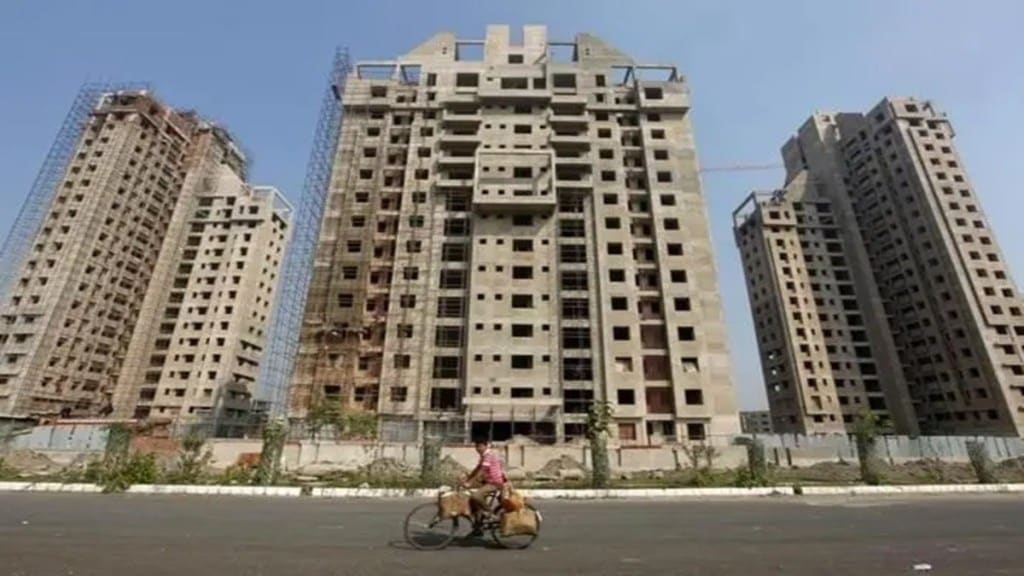The sales of mid-premium residential properties (priced between Rs 1-2 crore) are expected to get a leg up with the Union Budget proposals.
As per the Budget proposal, those earning upto Rs 12 lakh in salary will pay nil income tax in the new regime. This move is expected to leave additional disposable income in the hands of taxpayers. A third of the tax relief , estimated at Rs 1 lakh crore could go into consumer expenditure and the rest into savings and investments, according to estimates.
“I think more disposable income will augment demand for mid-premium (Rs 1-2 crore) housing segment. These are typically first-time home buyers and upgrade their homes in a few years as they move up in their career,” said Amit Kumar Sinha, managing director and CEO at Mahindra Lifespaces.
Sinha said the premium properties (between Rs 2-5 crore) will have some impact, due to rub-off from more interest in the mid-premium segment.
Unlike affordable housing – properties priced less than Rs 40 lakh – the premium and mid premium segments have been posting good sales in recent times.
The supply of premium properties – priced over Rs 1.5 crore – increased by 24% in CY2024. The segment’s share in total launches increased to 30 % in H1 CY24 from 11% in 2019. Premium home sales increased to 26% in 2024, from merely 7 %n 2019, according to Anarock Research.
Houses priced between Rs 40 lakh and Rs 1.5 crore (mid- and premium segment) had a share of 52 % in total supply in H1 CY24 and a share of 56 % in total sales in 2024. The segment’s share in sales and launches has hovered around 49-63 % over the years.
Gulam Zia, senior executive director at Knight Frank said the combination of higher disposable income, improved sentiment due to economic stability and attractive home loan rates will encourage buyers to invest in premium and luxury segments.
“NRIs and HNIs may find the Indian luxury real estate market more appealing, especially in key metros like Mumbai, Bengaluru and Delhi-NCR,” Zia said, adding that developers are likely to introduce more premium projects to meet this anticipated demand, focusing on amenities, sustainability and smart home technologies.
The number of HNIs is expected to double to 1.65 million by 2027. Over 15% of India’s HNIs are under 30, riding on success of unicorns, IPOs and tech-driven ventures. This number is expected to rise to 25% by 2030, as younger entrepreneurs redefine wealth creation, according to Anarock.
Real estate continues to be a cornerstone of wealth allocation for Indian HNIs and UHNIs, with 32% of their wealth allocated to real estate, Anarock said recently.
Budget proposals such as concessions for two self-occupied houses and increase in limit for TDS on rent to Rs 6 lakh is expected to further boost demand for premium houses, developers said.
“We anticipate customers with these advantages (Budget proposals), to be more inclined to buy real estate over renting, particularly homes that offer modern amenities and spacious living spaces,” said Jayant B Manmadkar, chief financial officer at Brigade Group.
Properties such as larger/premium apartments, integrated townships, homes with good amenities will continue to be more in demand as they cater to the evolving lifestyle, aspirations and preferences of homeowners, Manmadkar said.
Murali Malayappan , chairman and managing director at Shriram Properties said while there is already a shift in preference for luxury and high-end properties by a section of society, the Budget announcement further enhances aspirations.
“The ripple effect of this would be premiumization of the mid and upper mid-market segments as we may see developers offering better amenities in those segments as well in order to make them appealing to consumers.
After the budget, the RBI’s move to cut rates is expected to revive sales of affordable housing which has been hit by higher rates in the last couple of years, experts have said.

